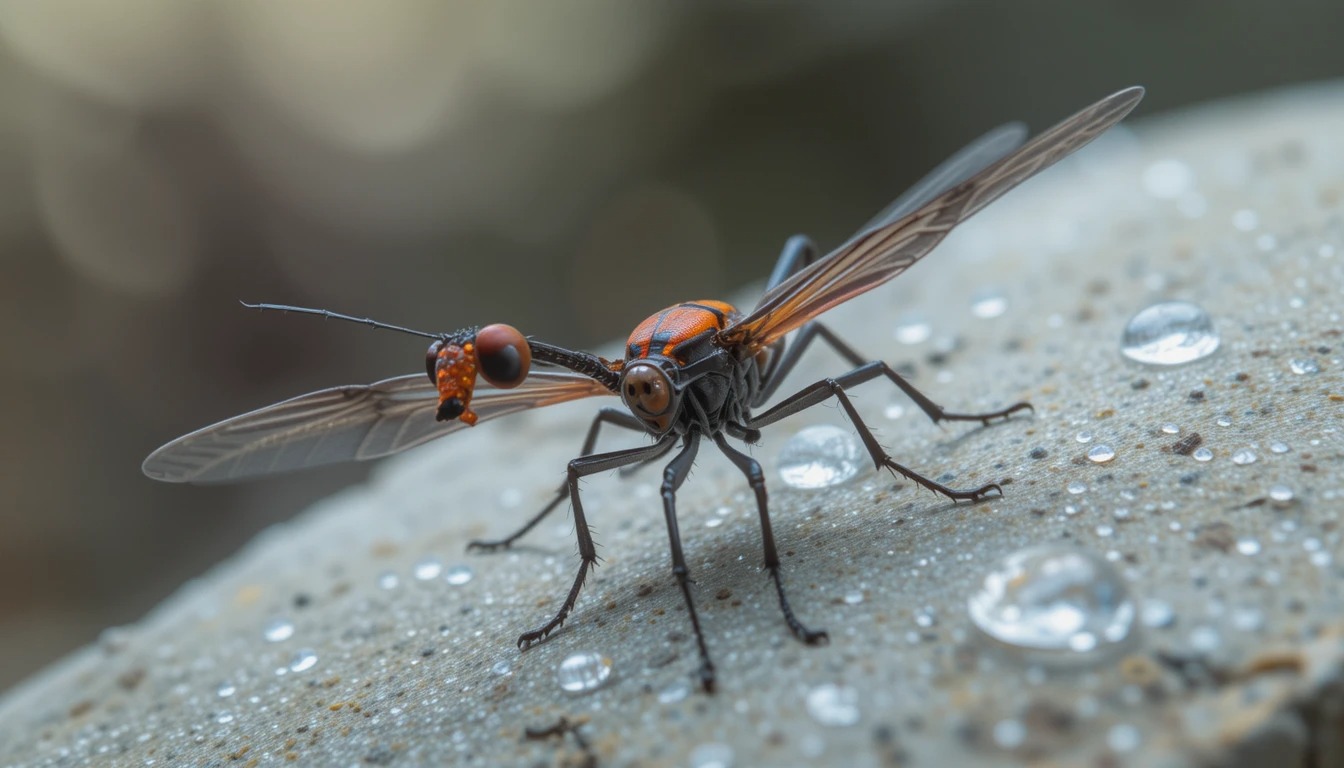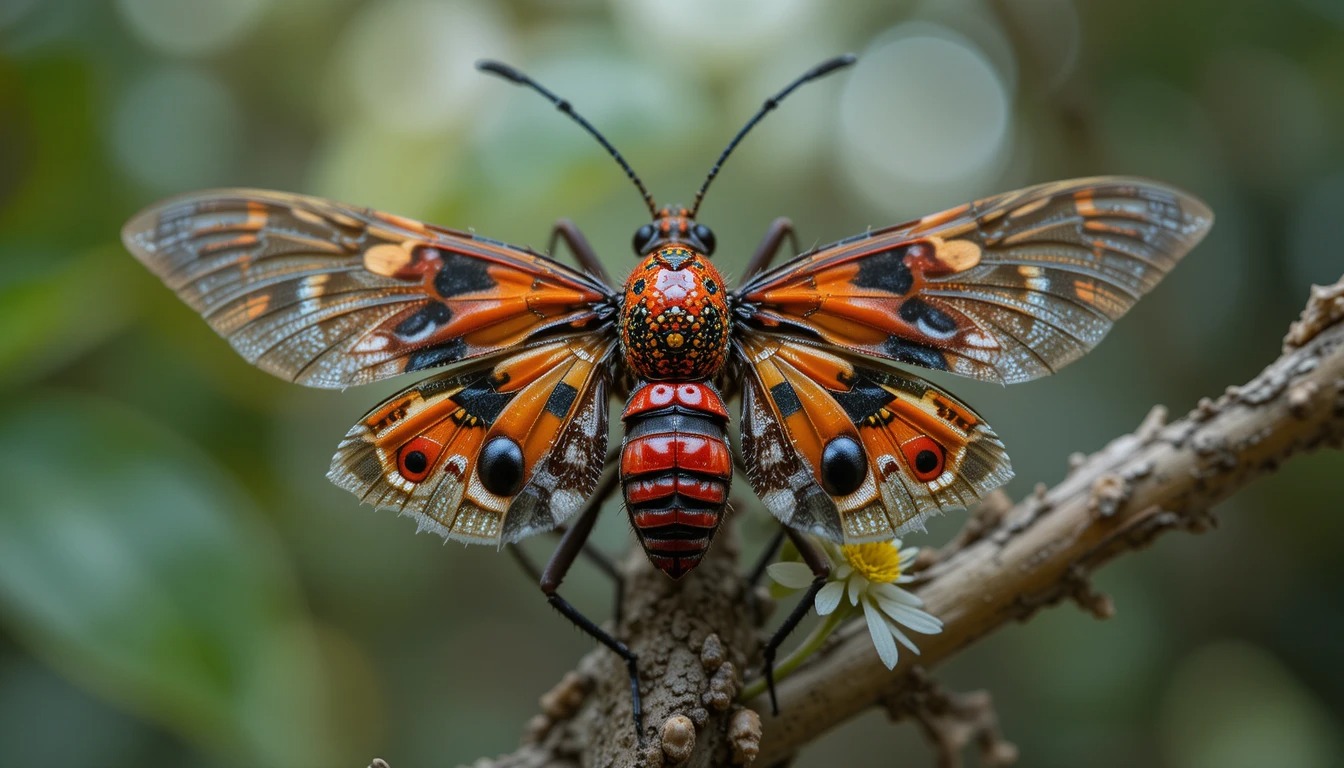Agricultural communities all throughout Southeast Asia are somewhat concerned about the identification of a new lanternfly species Vietnam Cambodia. Threatening agriculture, forests, and the ecosystem, these invading insects have been felt all over the region. Local farmers as well as world ecosystems depend on an awareness of this new species, its effects, and the actions being done to fight it. The details of the new lanternfly species Vietnam Cambodia, its traits, the harm it might inflict, and the continuous attempts to solve this problem will be discussed in this paper.
The Species of Lanternfly
One well-known form of planthopper with a unique and vivid look is the lanternfly. Part of the Fulgoridae family, the species is usually found in tropical and subtropical climates. Part of an increasing trend of invading species endangering native biodiversity and agriculture, the new lanternfly species found in Vietnam and Cambodia is becoming a serious concern. The eating habits of lanternflies are well known; they may severely harm crops and weaken plants.
Because Vietnam Cambodia’s new lanternfly species may infest and harm a great range of plants, it has generated concern. It is thought that the species came unintentionally on transportation boats or in plant shipments after international commerce.
Because it feeds on the sap of trees and plants, which can cause wilting, slowed development, and even plant death, the bug is very damaging. Important crops like rice, fruit trees, and even wood species might be impacted by this feeding pattern. As these insects spread, they might have significant effects on the surroundings as well as local farming.
Effects of the New Lanternfly Species on Agriculture
The identification of the new lanternfly species Vietnam Cambodia has attracted fresh interest on the possible extensive agricultural harm caused by invading species. Lanternflies are not a recent hazard; rather, another species, the spotted lanternfly, has caused havoc in many areas, particularly in portions of the United States. Still, the new species discovered in Southeast Asia possesses traits that would make management very challenging.
Damage to Crops
The effect of the new lanternfly species Vietnam Cambodia has on nearby crops is one of the most major concerns. Among the several plants these insects are known to affect are commercially significant crops like rice, fruit trees (like mangoes and papayas), and even vine crops like grapes. By sucking the sap from the plants, the lanternflies cause weaker plants that are less productive and more prone to disease.
Continuous feeding over time can cause plant dryness, lower fruit yields, and, in severe situations, plant mortality. For areas like Vietnam and Cambodia where revenue comes mostly from agriculture, this may have disastrous consequences for local businesses and food security.
Timber and Forest Species
Apart from endangering agriculture, the new lanternfly species Vietnam Cambodia threatens local forests and wood resources. By eating on their sap, insects like this can harm many different kinds of plants. Stunted development, poor health, and occasionally even tree death can follow from this. Furthermore, affecting the local ecosystems and losing biodiversity, the removal of native forests might have environmental repercussions.
For the timber sector, this bug is a fresh and harmful problem. The value of timber may drop if some kinds of trees are sick, which would result in financial losses for individuals that depend on the wood business. In nations like Vietnam and Cambodia where forests are vital to the national economy, this is an increasing issue of concern.
The New Lanternfly Species’ Expansion
Vietnam Cambodia’s new lanternfly species has expanded quickly, and local governments are growing more and more worried about its explosive growth. On automobiles, tools, and even agricultural trade paths, the insects may travel great distances. Authorities find it difficult to contain them, as they may contaminate places far from their site of introduction.
The dissemination of the novel lanternfly species Vietnam Cambodia is mostly dependent on the movement of commodities across borders. The great trade networks of Southeast Asia might unintentionally carry these pests, which can cause outbreaks in previously untouched new places. Early diagnosis and quick treatment are especially important in averting a broad outbreak since commerce and travel keep rising in the area, increasing the danger of further spread.
Fighting the New Lanternfly Species in Southeast Asia
Local authorities and agricultural professionals have reacted right away upon the identification of Vietnam Cambodia’s new lanternfly species. Environmental groups and governments are working to stop this species from proliferating and lessen its effects on forests and agriculture.
Tracking and Early Detection
Monitoring and early identification is one of the first stages Vietnam Cambodia take in controlling the new lanternfly species. Agencies in the environment and agriculture are trying to set up surveillance systems in strategic places where lanternflies are likely to show up. Among these monitoring activities are building awareness among farmers about the indicators of lanternfly infestations, setting up traps, and routinely surveilling the nearby vegetation.
Strategies for Pest Management | New Lanternfly Species Vietnam Cambodia
Once an infestation is found, steps of pest management are carried out to stop the new lanternfly species Vietnam Cambodia from proliferating. To lower the lanternfly population, these steps might call for the use of pesticides, focused spraying, and eradication of afflicted plants. But given their negative effects on the environment, chemical control strategies have been attacked, so professionals are looking at more ecologically friendly alternatives.
Furthermore, under investigation are biological management strategies such as bringing native lanternfly species predators to assist in lowering their number. This strategy has demonstrated success in other areas and could also be a workable answer for Southeast Asia.
Cooperation Across Borders
Vietnam Cambodia’s new lanternfly species presents a cross-border hazard; hence, international collaboration is very crucial in solving the problem. Working jointly, Vietnam, Cambodia, and surrounding nations track the lanternfly’s spread and distribute information on its effects. More coordinated pest management measures, research, and public education campaigns enabled by this cooperation serve to slow down the spread of this invading species.

Frequently Asked Questions Concerning the New Lanternfly Species Vietnam Cambodia
Q1: What is Vietnam Cambodia’s new lanternfly species?
Recently found in Southeast Asia, the invading bug species Vietnam Cambodia is a lanternfly. By devouring the sap of several plants, including wood species and crops, it threatens local ecosystems and agriculture. Its quick spread has sparked questions about possible effects on the agriculture and wildlife of the area.
Q2: How may the new lanternfly species damage crops?
By sucking sap from plants, the new lanternfly species Vietnam Cambodia harms crops, which can cause dehydration, stunted development, and lowered fruit production. Constant feeding over time might weaken the plants, increasing their susceptibility to disease and maybe resulting in plant mortality.
Q3: How are the new lanternfly species being controlled?
Monitoring and early identification, pest management strategies including pesticides, and biological control techniques include efforts to manage the new lanternfly species Vietnam Cambodia. Southeast Asian nations are also cooperating to exchange statistics and coordinate containment plans.
Q4: Are other areas able to get the new lanternfly species?
Indeed, commercial routes and the flow of products allow the new lanternfly species Vietnam Cambodia to reach other areas. It is tough to manage, as it may pass on agricultural supplies, machinery, and cars.
Q5: How may the new lanternfly species affect Southeast Asia over the long term?
Significant crop losses, damage to forests, and financial consequences for nearby businesses dependent on agriculture and lumber might be long-term consequences that the new lanternfly species Vietnam Cambodia could bring about. Unchecked, the species might upset nearby ecosystems and lower biodiversity.
In Essence
Finding the new lanternfly species Vietnam Cambodia emphasises how difficult it is becoming to control invading species in Southeast Asia. This new species seriously threatens natural ecosystems as well as agriculture; hence, quick response is required to stop more harm. Authorities want to reduce the effect of this invading species and safeguard the agricultural resources of the area by means of monitoring systems, pest control actions, and worldwide collaboration. Local populations as well as international players must be alert as attempts go on to stop the new lanternfly species Vietnam Cambodia from proliferating.
